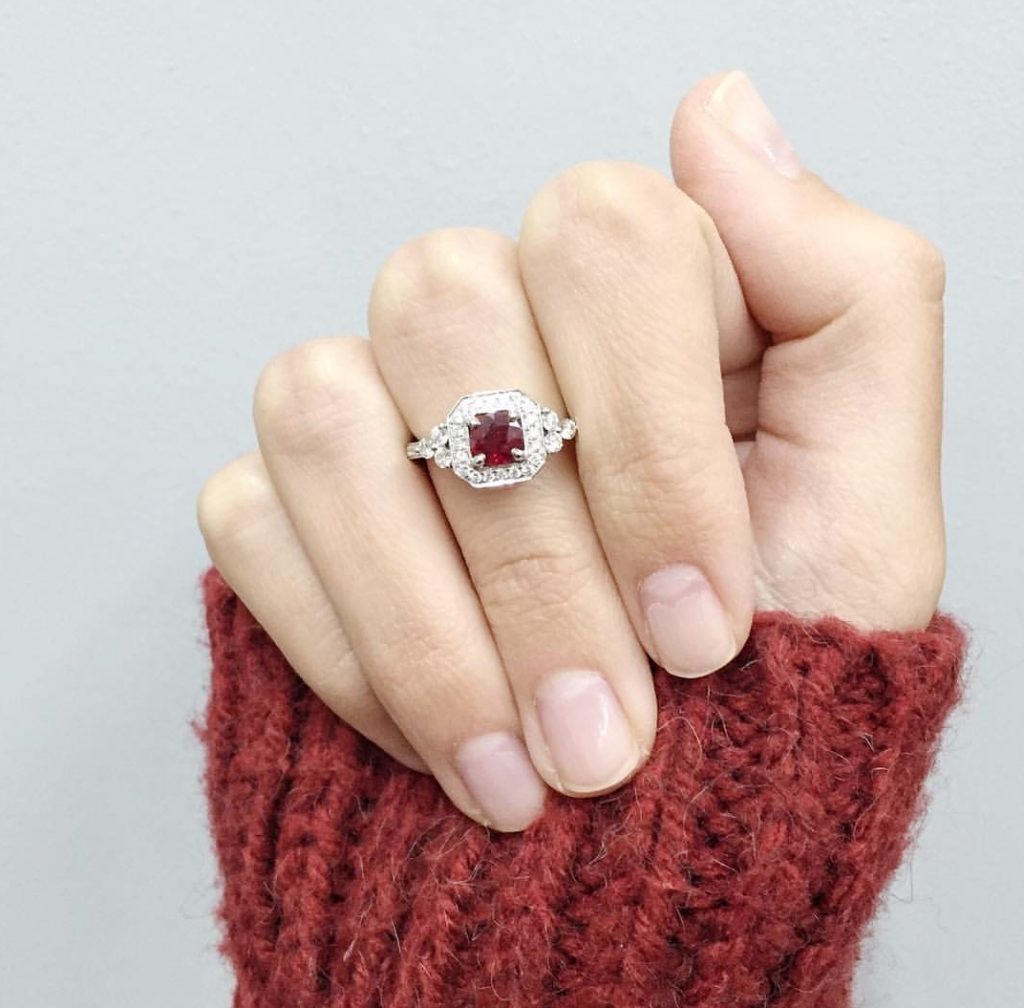In the early 1900s, diamonds were a common choice for engagement rings, but were considered just one option amongst many. The popularity of coloured gemstone alternatives began to increase until 1938 when De Beers launched a decades-long, multi-million dollar press and advertising campaign that successfully imbued diamonds as the primary symbol of betrothal (and achievement).
Fast forward to today and the popularity of gemstone engagement rings is on the rise again.
Before you purchase your gemstone engagement ring, however, there are a few important details that must be considered.
All gemstones have a unique ‘hardness’ factor. The hardness of any gemstone, essentially relates to how resistant the stone is to scratching. Hardness is measured on a scale of 1 to 10 known as the Mohs Scale.
One of the reasons the term diamonds are forever exists is because diamonds are considerably more durable than any other gemstone and rank 10 (highest) on the Mohs Scale. This isn’t to say that a diamond can’t be broken but more that if you rub something sharp against the surface of a diamond, it won’t leave a scratch.
As your engagement ring is something you will wear every day, it is important to take note of the Mohs Scale, among other factors, when picking your gemstone. If you have your heart set on one of the stones that is ranked poorly, it is recommended that you choose a very protective setting as well as take extra care while wearing your ring so that your stone does not become damaged over time.
Here are our top selection for engagement ring gemstones, other than diamond, according to their rank on Mohs Scale:
- Sapphire (9)
- Ruby (9)
- Topaz (8)
- Morganite (7.5-8)
- Aquamarine (7.5-8)
- Emerald (7.5-8)
- Tourmaline (7-7.5)

